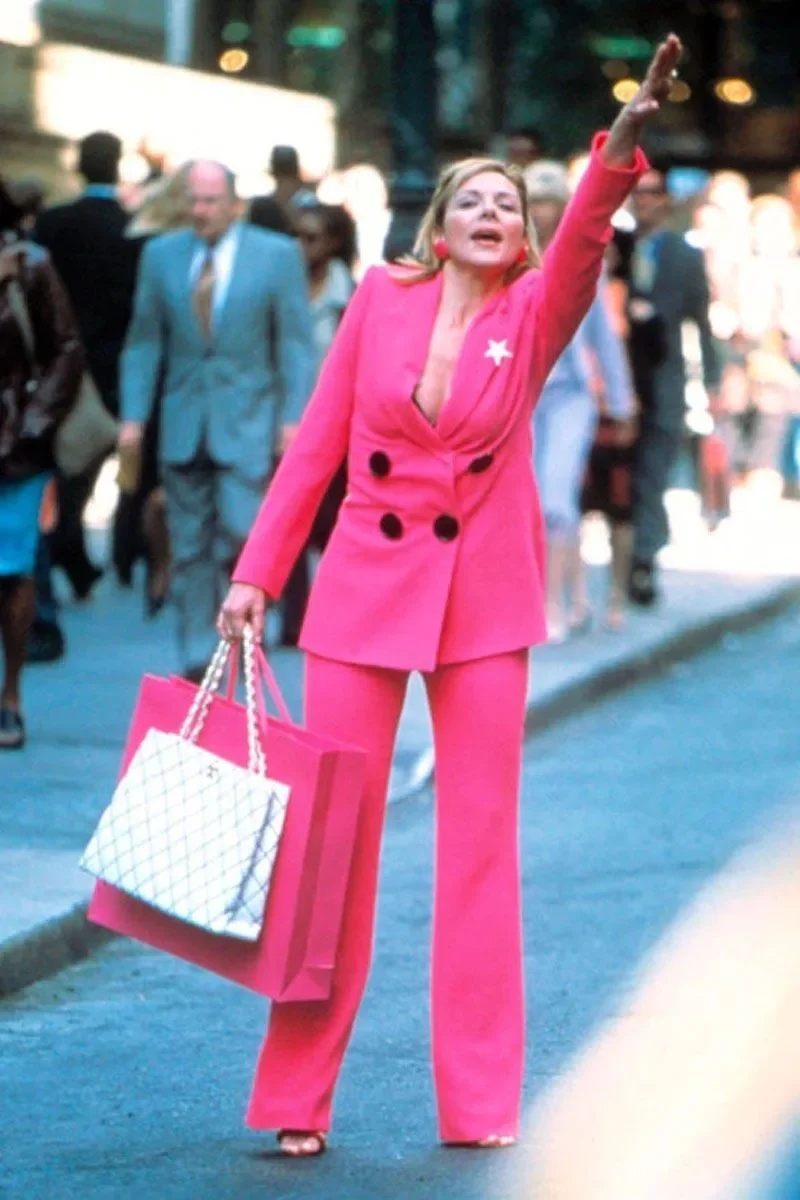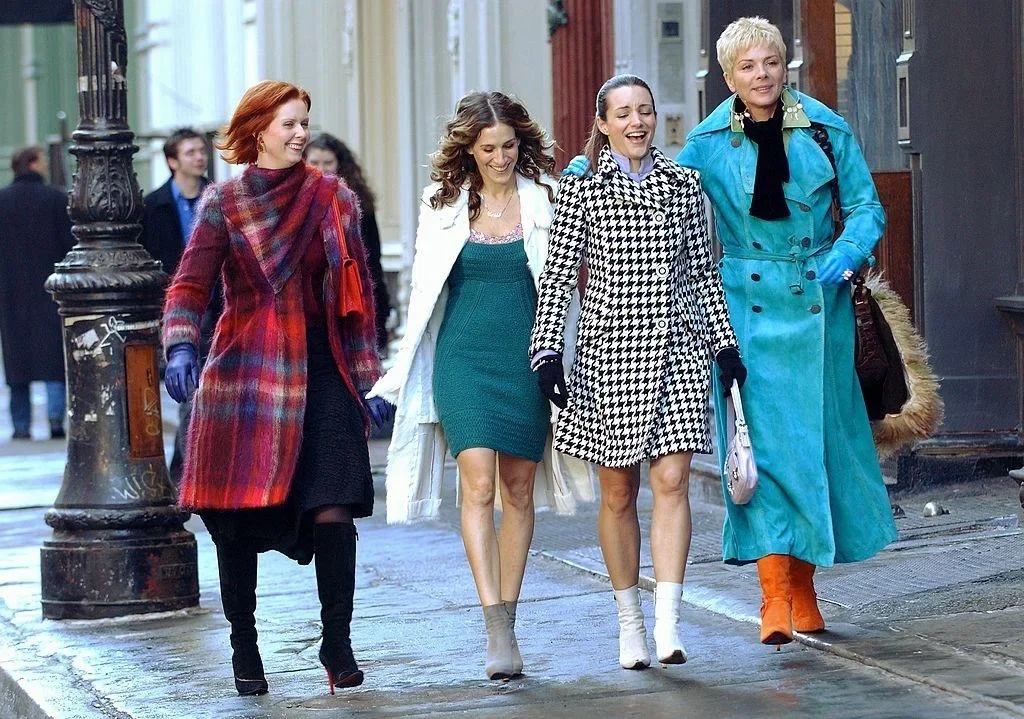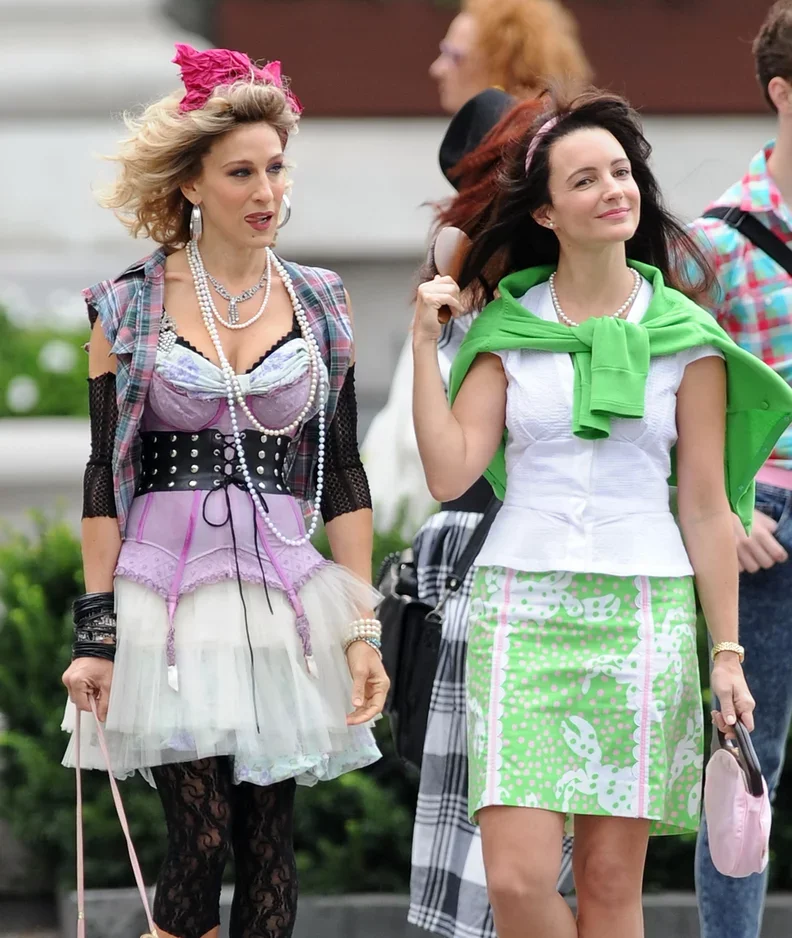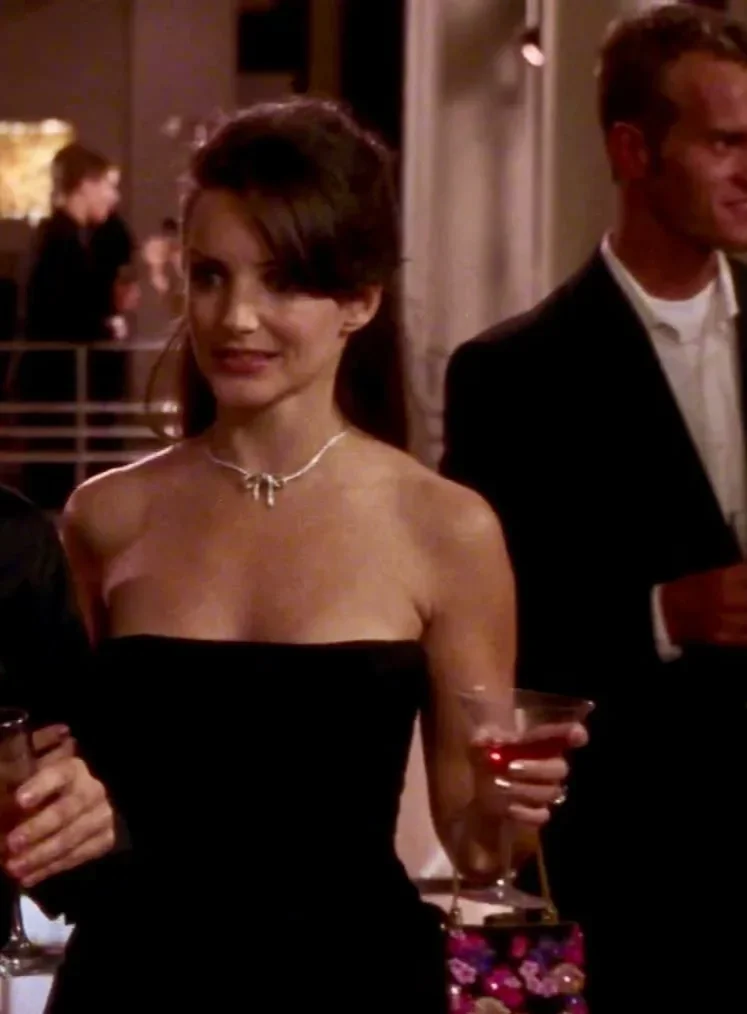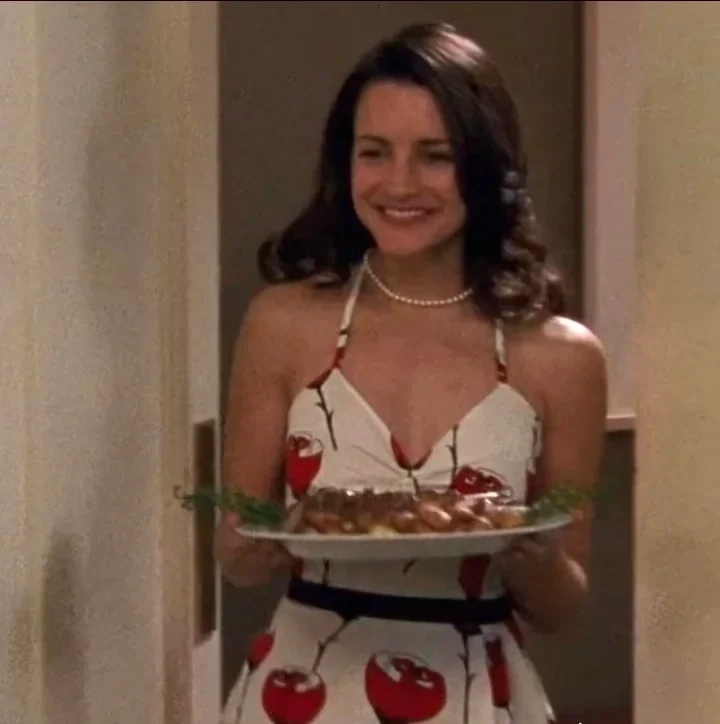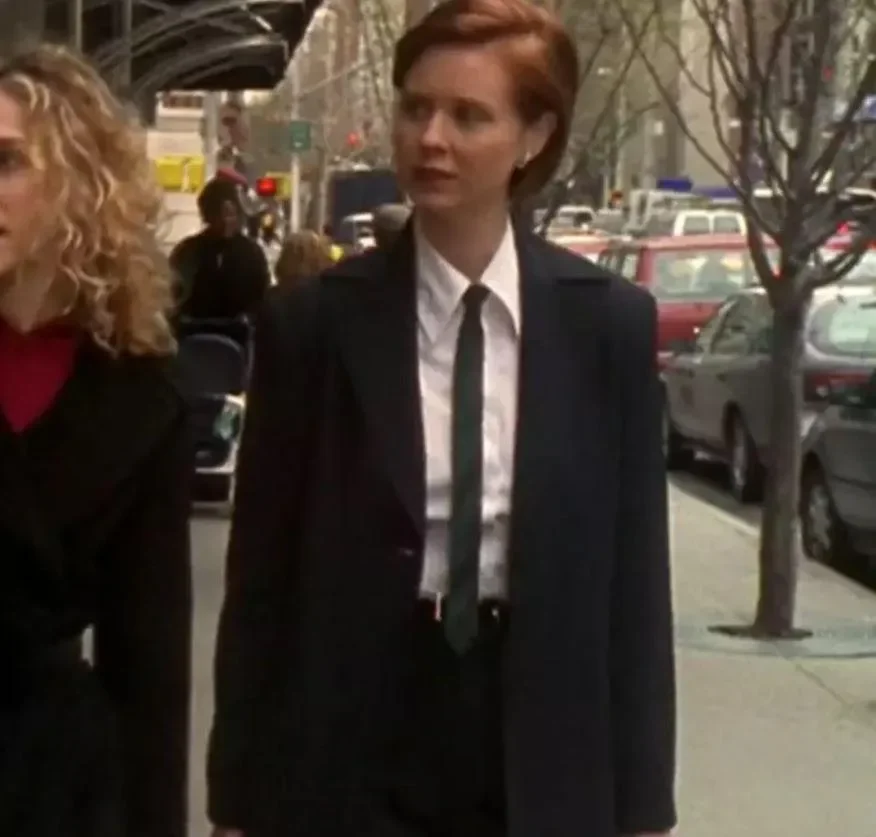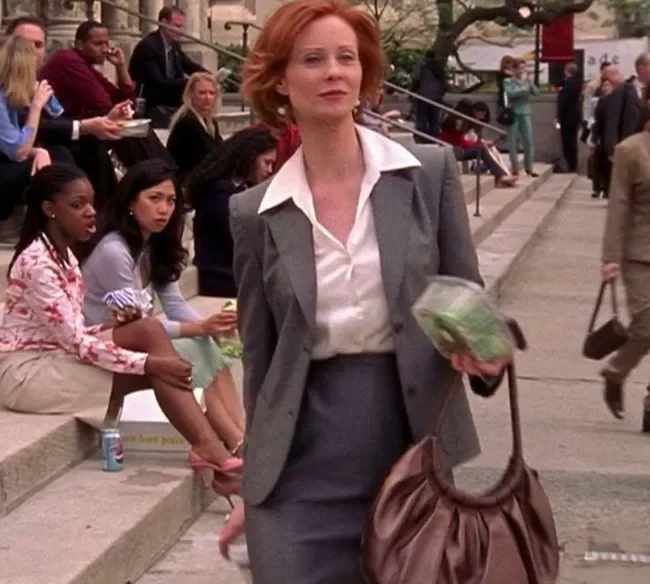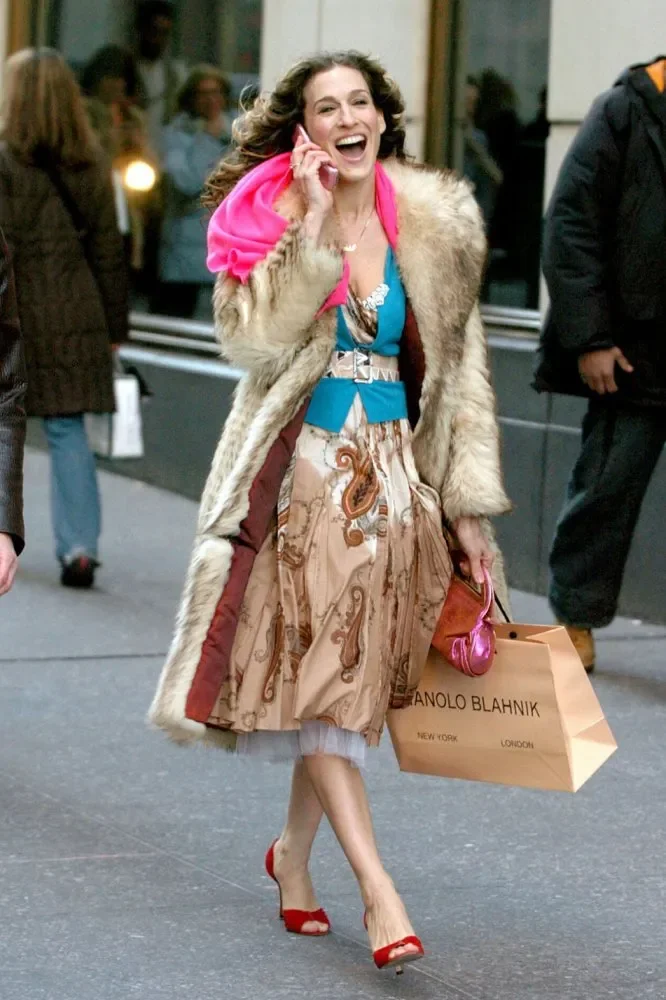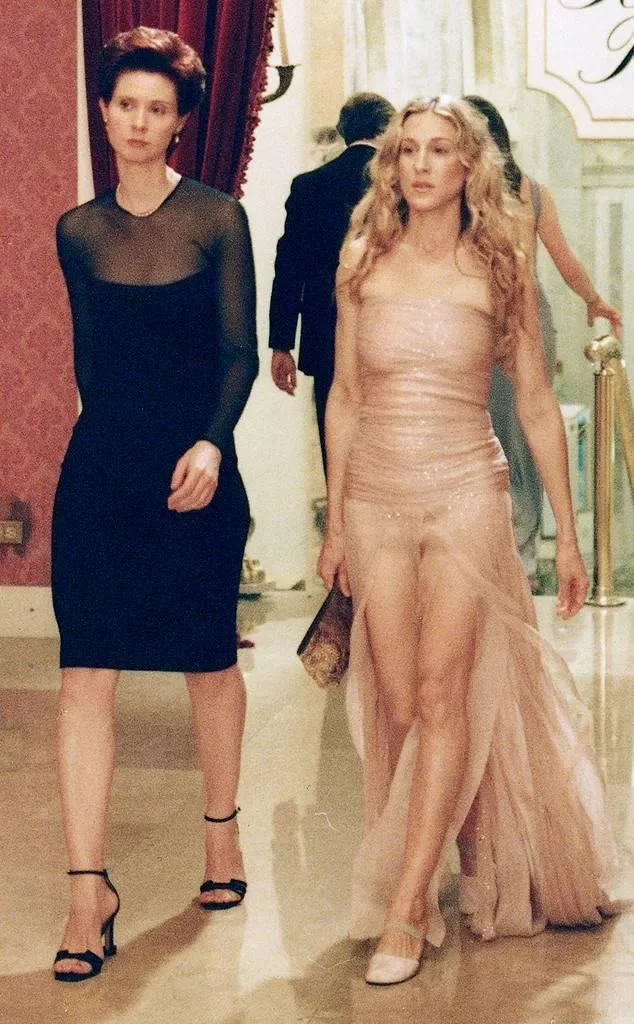The Story Behind Your Style: Sex And The City
Confession: I'm a re-watchaholic. And right now, I'm deep into another biannual comfort binge of Sex and the City. Some people chase new releases; me? I circle back to shows that feel like old friends. Rewatching a good show is like that, rewearing one outfit, you keep coming back to it, never gets old, it just reveals more of itself (and you) each time.
If you're like me, you know the feeling. You press play thinking it'll be background noise, and suddenly you're three episodes deep, analyzing Carrie's latest ensemble and Miranda's power moves. It's like slipping into a familiar café; the experience tastes the same, but you notice different flavors each time. That's the magic of re-watching: you don't just see the show, you see yourself reflected in it. Who you were the first time isn't who you are now. Each stage of life adds a new lens.
This time, what's catching my eye isn't just the witty one-liners or messy romances. It's the wardrobe. Because Sex and the City wasn't just a show about love and friendship, it was a masterclass in visual storytelling through style. Something about rewatching a show at a different point in my life gives me a new perspective. SATC is such a quintessential part of 20th-century television; it’s almost 30 years old and yet still oh so relevant. Being the projector that I am, I see more than what fits in the TV screen and see something deeper.
Identity v Arc
Your style identity is your aesthetic DNA. It’s not just the pretty outfits pinned to your Pinterest boards; it’s the deeper connection between who you are and how you show up in the world. Identity grounds you; the arc moves you forward. Your style arc is the narrative of how that identity shifts and grows from your past influences, to your present choices, to your aspirational future.
The wardrobe stylist for the show, Patricia Field, was so interwined in the visual storytelling that she crafted legendary style arcs that weaved into their characters. That’s why Carrie, Charlotte, Miranda, and Samantha still feel iconic decades later: their wardrobes were aligned with their identities. Let’s get into them.
Samantha Jones: The Powerhouse
Samantha was a PR agent who understood image as currency. As a single, sexually fluid, childless woman building her own empire, her style choices were bold statements: I am here because I belong here. This is my space.
Her Style Language:
Statement pieces tailored for her figure
Subtly sexy with calculated accessorizing
Bold colors and plunging necklines
Unapologetic silhouettes that commanded attention
Her clothes weren't just sexy, they were strategic. Every outfit was a billboard for her confidence, shouting before she even spoke: I don't just enter the room, I own it.
Samantha pulled herself up by her bootstraps and had her own PR firm before 40. No dual income, no family money. She was sure of herself, and it showed in every wardrobe choice and accomplishment. When your personal and visual identity coincide like that, you've achieved what I call an aligned style identity.
This archetype is for the woman who's done playing small, whose wardrobe amplifies her ambition rather than hiding it.
Charlotte York: The Traditionalist
Charlotte was a prim and proper WASP museum curator with an eye for art and quality. Like the collections she curated, she aspired to create a museum-esque life for herself, traditional, refined, picture-perfect. How was this reflected in her style of language? Charlotte's wardrobe said: I value tradition, I find beauty in refinement, and I belong in elegant spaces. Every piece reflected her values and her checklist life:
✅Upper East Side apartment,
✅ Lawyer husband,
✅ Show dog,
✅Charity board position.
Her Style Language was pure classic, all-American romantic. She wore silhouettes that highlighted her shape while staying modest, knee-length skirts and dresses, gingham prints, Burberry trenches, and ascot-style scarves. Her color palette stayed within black, navy, beige, pink, and yellow. The overall effect was non-threatening and approachable. The kind of woman you'd trust immediately.
For women today, Charlotte's archetype is about honoring your roots, embracing timelessness, and leading with grace. It's the power of walking into a room and being taken seriously because your presentation exudes composure and intention.
Miranda Hobbes: The Realist
Miranda was a high-profile lawyer and partner at a major firm, stoic, successful, and mission-driven. Her style arc mirrored her career path: structured, tailored, pristine.
Her Style Language:
Very muted, deep color choices (which complemented her red hair beautifully)
Minimal print or pattern
Structured blazers and tailored pants with clean lines
Minimal, fuss-free styling
Miranda's energy oozed seriousness, and her wardrobe reflected her values. She wasn't male-centered or traditionally feminine. Not a romantic at heart, style-wise or otherwise. Here's what's deeper: Miranda often referred to herself as "not sexy" and mentioned being bullied in grade school. It seems irrelevant when discussing personal style, but it's actually critical because most of our style choices come from what we tell ourselves and what we've internalized from others.
Miranda's archetype resonates with women who want clothing that says "I'm capable, intelligent, and in control" without sacrificing personality. She balanced all without sacrificing personality.
Carrie Bradshaw: The Dreamer
Carrie's personal style identity was as whimsical as her character. A writer in New York City, not originally from there but enamored with it, her career and lifestyle lived where thought and imagination collide.
Her Style Language:
No box to put her in a maze of possibilities
Mixed genres and prints without logic or convention
Vast color choices
The definition of dopamine dressing as a lifestyle
Impractical, visionary, illusionist
As an emotionally charged woman who felt and acted before thinking, Carrie's style wasn't conventional. Her tutu skirts, oversized flowers, and mismatched patterns said: Style is art, and I'm the canvas. Very self-focused dressing. The definition of dopamine dressing as a lifestyle, whether understood or applauded, Carrie fully embodied herself in her style choices. Lacking boundaries and structure in life, the same could be said about her style. But that was the point. Every outfit was a brushstroke of self-expression.
Carrie's archetype speaks to women who see clothes not as rules to follow, but as creative freedom, women who want their style to be as adventurous as their spirit.
Which One Are You?
Here's the thing: you don't have to choose just one archetype. Most women are a blend. Maybe you've got Charlotte's love of refinement, Samantha's boldness, Miranda's structure, and Carrie's playfulness all rolled into one.
When I start working with clients, I often hear: "I have no fashion sense," or "I can't wear stuff like that." But here's what I know: confidence isn't something that can be given like a bouquet; it has to be planted like a seed and nurtured to develop. The fertilizer has to be receptive.
That's why I created my Style Diagnosis service. It's a foundation builder that identifies the YOU in your personal style. It helps women uncover the mix that tells their authentic story. Because your wardrobe should feel like an extension of your ambition, your desires, and your evolution. Not a costume you're borrowing.
Getting to the Root
When you know your style language, you can make intentional, aligned style choices. Shopping gets easier. Dressing gets faster. The stress of getting dressed? Eliminated. Because confidence doesn't come from clothes. It comes from clothes that reflect you, your lifestyle, your values, and your self-concept. Silent signals get transmitted every time you get dressed and step out into the world. Your wardrobe is speaking before you say a word.
So let me ask: Which archetype do you see in yourself right now? And who are you becoming?
If you're over the popsicle and glue stick method and want concrete solutions that speak to who you are and how you want to be reflected in the world, book your Style Diagnosis today.


